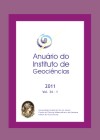Bioavailability of Organic Matter in the Superficial Sediment of Guanabara Bay, Rio de Janeiro, Brazil
DOI:
https://doi.org/10.11137/2011_1_52-63Abstract
Thirty superficial sediment samples were collected in Guanabara Bay in order to identify new trophic state and environmental quality descriptors for coastal systems. A biochemical approach was used for analyzing the quality and quantity of sedimentary organic matter and metabolic bacterial activity. The samples were analyzed for particle size; organic matter, protein, carbohydrate, lipid, biopolymeric carbon, and bioavailable carbon levels; and bacterial metabolic activity. The results show a homogeneous spatial distribution for the anaerobic bacteria web and for biopolymers (carbohydrates>;lipids>;protein). The NE area of the bay displayed sediment lipid levels above 1 mg/g, indicative of organic sewage input. Spatial distribution of the superficial sediments in relation to other variables was not significant (p>;0.05). Biopolymers and labile organic matter showed a significant correlation with the average particle size of 80% of the fine particles. Despite the availability of labile organic matter, under the form of biopolymeric carbon, only 50% of the carbon was available to the trophic web. The bacterial consortia formed by sulfate reducing and denitrifying bacteria sustain the benthic trophic food web in Guanabara Bay.Downloads
Download data is not yet available.
Downloads
Published
2011-01-01
How to Cite
Silva, F. S. (2011) “Bioavailability of Organic Matter in the Superficial Sediment of Guanabara Bay, Rio de Janeiro, Brazil”, Anuário do Instituto de Geociências. Rio de Janeiro, BR, 34(1), pp. 52–63. doi: 10.11137/2011_1_52-63.
Issue
Section
não definida
License
This journal is licensed under a Creative Commons — Attribution 4.0 International — CC BY 4.0, which permits use, distribution and reproduction in any medium, provided the original work is properly cited.















